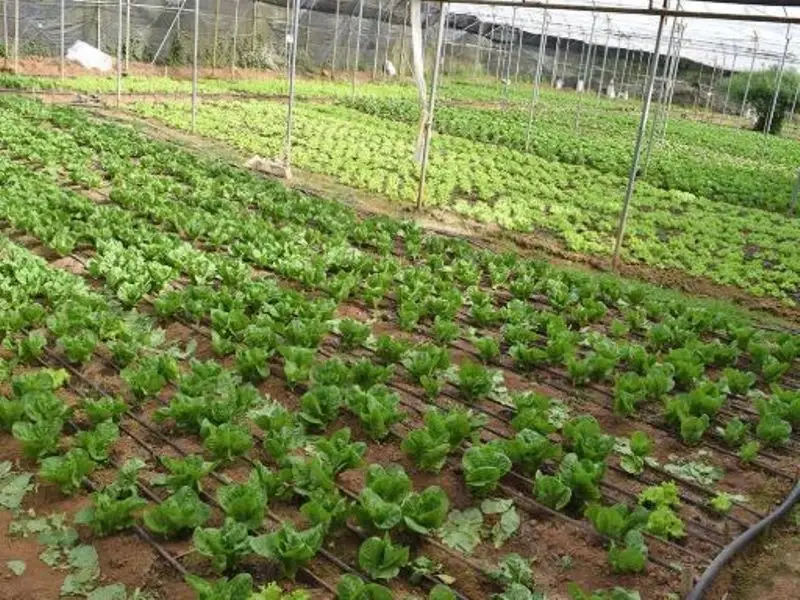Relevance: Mains: G.S paper III: Indian Economy: Agriculture
Context

In the age of climate change and water scarcity, micro-irrigation can help increase crop yield and decrease water, fertiliser and labour requirements.
Analysis
India is facing the twin challenge of water scarcity and population explosion. The ongoing water crisis has affected nearly 600 million people and is expected to only worsen: The country’s population is touted to increase to 1.6 billion by 2050.
The agriculture sector is the largest consumer of water in India. It accounts for approximately 90 per cent of 761,000 billion litres of annual freshwater withdrawals in the country. Per capita consumption of water in agriculture sector ranges from 4,913 to 5,800 kilolitre per capita per year.
Agriculture may have to face the brunt: Water would be diverted to other sectors and agriculture would have to make its peace with lesser and poorer quality of water.
Climate change too has aggravated water scarcity concerns: It can, through its impact on weather patterns, affect livelihoods and well-being of our farming community.
The impact of climate change is much more evident in Indian agriculture, where around 85 per cent farmers are small and marginal and 60 per cent agriculture is dependent upon the vagaries of monsoon. The role of irrigation, therefore, takes the front seat.
The continued irrigation through traditional practices since the introduction of Green revolution in the 1960’s, however, has begun to show its multitudinous ill effects on groundwater quality and height, water logging, soil salinity, soil health, crop productivity, partial factor productivity and cost economics of farm practices.

This is where micro-irrigation assumes significance.
Micro-irrigation gained prevalence when the Parliament was rocked with issue of farmer suicides. Sensing the significance and probable benefits of the process to double the farmers’ income along with agricultural sustainability and environmental quality, the Union government launched a comprehensive flagship programme called Pradhan Mantri Krishi Sinchai Yojana or “more crop per drop”.
Under the programme, financial assistance of up to 55 per cent is available for small and marginal farmers and 45 per cent for other farmers for adoption of micro-irrigation systems. The funding pattern between the Union governments and the state government’s share since November 2015 has been 60:40 for all states except the North East and the Himalayan states, for which the funding pattern is 90:10.

Micro-irrigation can increase yields and decrease water, fertiliser and labour requirements. By applying water directly to the root zone, the practice reduces loss of water through conveyance, run-off, deep percolation and evaporation.
These losses are unavoidable in traditional irrigation practices; micro-irrigation, through its water-saving approach, has paved the way for higher water use efficiency of around 75-95 per cent.
Another resource saving practice possible through micro-irrigation is fertigation, which comprises combining water and fertiliser application through irrigation. Fertigation results in balanced nutrient application, reduced fertiliser requirement of around 7 to 42 per cent (thus, saving expenditure cost incurred by farmer), higher nutrient uptake and nutrient use efficiency.
It is quite apparent that in the present scenario, vertical expansion of agricultural lands is not possible. Therefore, in order to increase the yield and productivity, we have to focus on degraded and waste lands.
Micro-irrigation provides this opportunity. A national-level survey undertaken for the Union government showed that farmers were able to bring 519.43 hectares of degraded land under cultivation through the technique. It also helped use saline water for irrigation without causing salinity or osmotic stress to plants.
The practice needs wide scale adaptation in India, particularly in the Indo-Gangetic plains where the soil salinity is high.
Israel can be a good example — a desert nation with water scarcity has become a water surplus nation because it adaptated micro-irrigation practises, especially drip irrigation that saves almost three-fourths of the water used for irrigation done through open canals.
Drip irrigation is the most effective practice with water use efficiency of around 85-90 per cent.
Significant electricity savings — on an average 30.5 per cent — have been estimated and high fertilizer-use efficiency reported, resulting in an average consumption reduction of 28.5 per cent, according to a Federation of Indian Chambers of Commerce and Industry report.
Another advantage is maintenance of optimum soil moisture conditions that help increase overall productivity and profitability. Across various studies, it has been found that the adoption of micro-irrigation systems helped boost the yield of fruit as well as vegetable crops.
The productivity for fruit crops increased 42.3 per cent and that of vegetable crops by 52.8 per cent. There was an average reduction of 31.9 per cent in irrigation cost thorough higher water use efficiency. Another gain has been the adaptation of diverse cropping patterns.
It is quite evident that importance of micro-irrigation to achieve sustainability in Indian agriculture cannot be neglected. But it’s a long way ahead and requires extensive demonstrations, training and awareness programmes to bring Indian farming community abreast with micro-irrigation practices.
The farmers are one of the most distressed communities of our society. We have to work with the community and show them the practical and achievable benefits of the technique.
For more such notes, Articles, News & Views Join our Telegram Channel.
Click the link below to see the details about the UPSC –Civils courses offered by Triumph IAS. https://triumphias.com/pages-all-courses.php

